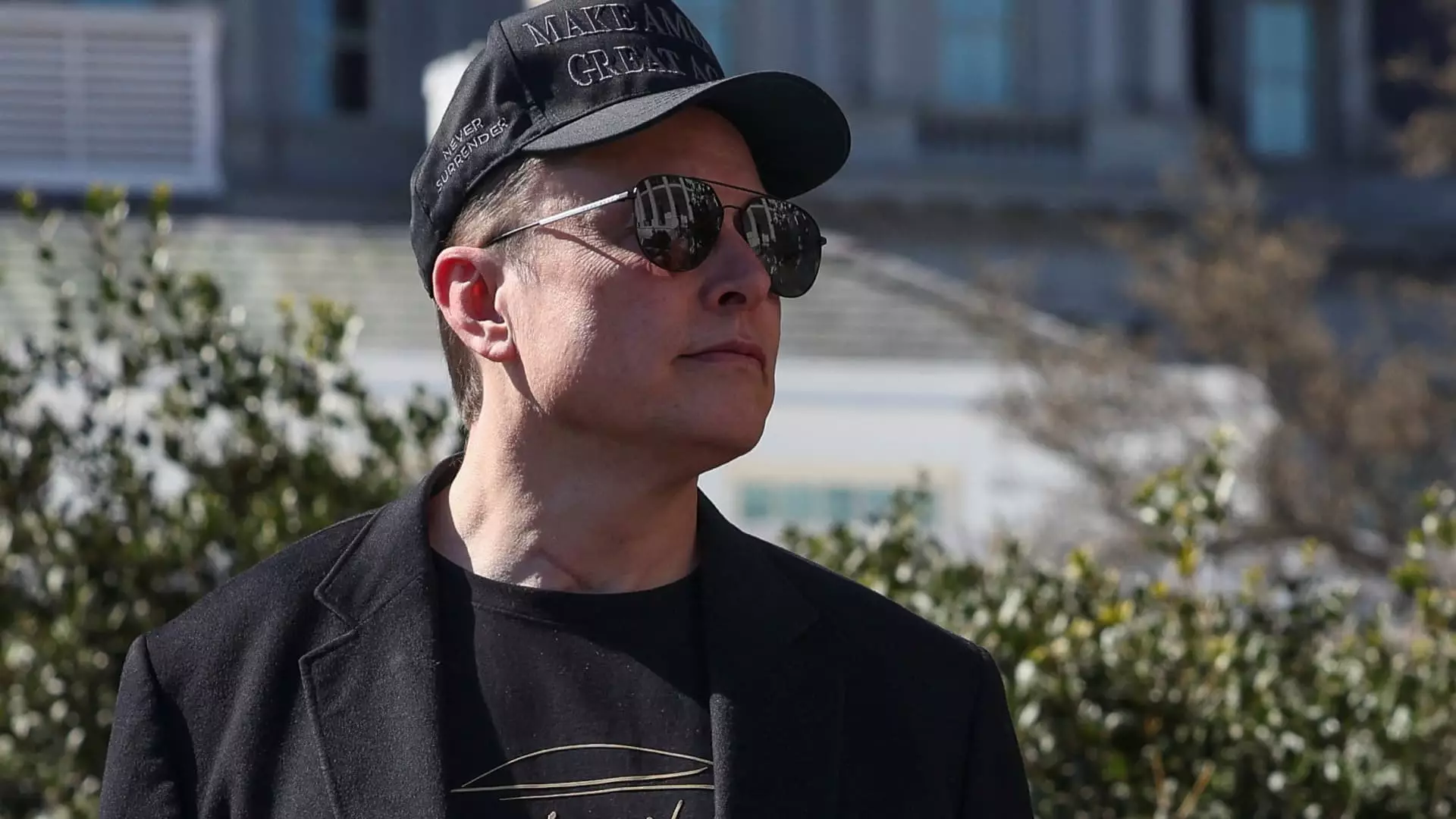Tesla’s first-quarter earnings report unveiled bitter truths reminiscent of an unwanted winter storm hitting a sunny California. With the company reporting a staggering 71% drop in net income and a 20% plummet in automotive revenue, the figures paint a dismal picture for a brand long celebrated for its innovation. As Tesla’s stock value has already dipped 41% in 2025, investors should be uneasy. In a high-flying sector once replete with excitement, the winds of uncertainty are clearly shifting against the electric vehicle (EV) giant.
This decline is not just a reflection of a seasonal demand dip; it signifies broader systemic issues in the automotive landscape and, by extension, the global economy. The disappointing earnings, with a report of adjusted earnings per share at merely 27 cents against an anticipated 39 cents, suggest that the thunderclouds loom larger than mere production hiccups or forward-looking adjustments.
Disruption in Production and Sales
Tesla attributed much of the earnings miss to the need for updates to its factories, particularly for its highly anticipated refresh of the Model Y SUV. However, this kind of production “optimization” raises a crucial question: Is Tesla strategically underestimating market dynamics? By focusing on future offerings while neglecting its current lineup, the company risks alienating customers who may find better value in lower-cost competitors—especially those emerging from the thriving Chinese market.
Additionally, this dip in revenues is exacerbated by an unsettling trend of lower average selling prices and higher sales incentives, which has a twofold effect: deteriorating margins and reduced perceived value of Tesla’s unique offerings. With every dollar trimmed from automotive income, the cracks in Tesla’s once indomitable armor are becoming more exposed.
Political Headwinds and Tariffs
Elon Musk’s increasing entanglement with US politics further complicates Tesla’s predicament. Amidst President Trump’s unpredictable tariff plans, potential increases in production costs loom over Tesla’s financial forecasts. The prospect of heightened tariffs on automotive glass, printed circuit boards, and battery cells could push operational costs beyond sustainable levels, risking not just profitability but critical supply chain relationships.
Investors should view this entanglement as a potential minefield. Especially considering Musk’s support for controversial political movements in Europe, the nuanced interplay of political sentiment may influence consumer trust and Tesla’s global market reach significantly.
Unraveling Demand and Competition
Given the burgeoning competition, particularly in the EV space in China, Tesla’s market positioning appears fragile. The company’s first-quarter vehicle deliveries dropped by 13%, revealing vulnerability against nimble competitors who can deliver quality at lower price points. Tesla’s current campaign to launch a driverless ride-hailing service in Austin may sparkle with technological promise, but it stands as a gamble with substantial risks tied to both execution and public perception.
As it moves into robotaxi trials, the company must successfully educate both regulators and consumers about the safety and reliability of autonomous driving technologies, while simultaneously battling entrenched competitors who enjoy superior visibility and lower operational costs.
The AI Projects Dilemma
While ambitious AI projects signal innovation, they also represent a potential financial burden. Tesla reported a crumbling operating income that dropped 66% year-on-year, predominantly due to rising expenses linked to these very projects. Reliance on expensive technological advancements must not come at the cost of the company’s core competency—automotive manufacturing. The idea that Tesla can simultaneously reinvent its automotive lineup while investing heavily in AI is admirable but possibly naive given current market pressures.
Moreover, regulatory credits that previously buoyed Tesla’s financials also underscore a dependency that could be dangerous. Increasingly, there’s a risk of relying on these credits for profitability—an uncertain foundation for future growth.
The Energy Sector as a Silver Lining?
Interestingly, amidst these setbacks, Tesla reported a promising 67% growth in its energy generation and storage revenue, signaling emerging opportunities. The electric vehicle market may face headwinds, but Tesla could pivot towards solidifying its position in the energy sector as a savior of sorts. However, it’s crucial to temper such optimism; immediate challenges in the auto market must be addressed comprehensively to ensure that these newly identified opportunities can be pursued without risking the company’s overarching viability.
To thrive, Tesla must prioritize not just innovation but also a grounded analysis of its operational strategies. Investors and consumers alike deserve a vision that balances aspiration with reality. The future of Tesla depends not on defeating competition, but on a fundamental restructuring of how the company views its role in a rapidly changing market landscape.

